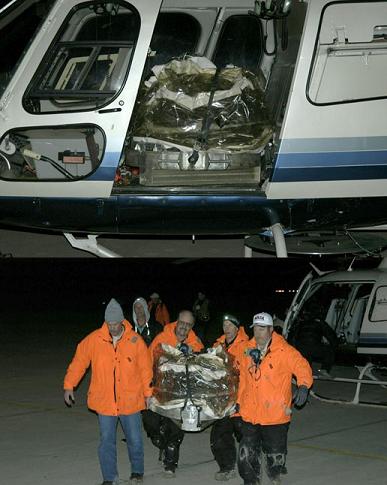A capsule containing star dust returned to Earth today. The capsule has been traveling with the mother spacecraft, Stardust, around the solar system since 1999
Avi Blizovsky and a concentration of sources

A capsule containing cometary particles and interstellar dust has arrived on Earth, after being released from a spacecraft orbiting the star. The capsule landed in the Utah desert yesterday, Sunday, at 12 noon, after an accelerated descent through the atmosphere, slowed by a parachute. Comet particles and interstellar dust collected for American research after a seven-year mission, during which it brought back particles from a comet. Scientists believe that the primordial dust samples will shed light on the origins of the solar system.
At the NASA Mission Control Center, in Pasadena, California, there was applause when the capsule was released from the mother spacecraft (Stardust) at an altitude of 111,020 km above the Earth. The previous director of the project, Ken Atkins, told the BBC that there was great excitement at the center when the capsule destined to return to the star managed to separate from the spacecraft, and that they expect a successful entry into the atmosphere and its landing.
Four hours after the 45 kg capsule was released from the spacecraft, it entered the atmosphere over the Pacific Ocean. The capsule reached a speed of 46,660 km/h, the highest speed of a machine entering the atmosphere, and it will be visible from the American Northwest as a streak of light. The first parachute will open at an altitude of 32 km, and the second, larger one, will open at an altitude of 3 km.
The stardust samples were collected by a military helicopter and flown to the NASA Research Center in Houston, Texas. At the same time, Stardust will continue its journey in space, and will enter a fixed flight path around the sun, after a 4.7 billion km journey around the solar system. This is in contrast to previous news that stated that a spacecraft would burn up in the Earth's atmosphere.
Preliminary surgeries will begin on Tuesday
The capsule was located by a helicopter only about an hour after landing, it was then flown to a nearby laboratory for initial tests. Tomorrow (Tuesday) it will be transferred to a special laboratory at NASA's Johnson Space Center in Houston, Texas, where scientists will get their first chance to examine the precious contents.
"I'm sure we'll get a sample that came from beyond the lunar orbit for testing," former project manager Ken Atkins told the BBC. "It's amazing to see again something that left Earth on February 7, 1999 return to Earth almost exactly seven years later."
The culmination of the seven-year operation was the approach flight to Comet Wilt on January 2, 2004. It collected particles from the icy body and came within 240 km of its rocky core. As part of the journey the spacecraft also captured dust grains formed in distant stars.
The scientists' work has only just begun. The precious box will be opened as mentioned on Tuesday. In the meantime, the materials are inside the same protective covering that protected them from the extreme conditions of space.
The scientists believe that inside the capsule there are about a million particles of the comet and the interstellar dust that were created from the departure of the solar system. They were trapped inside cells filled with an extremely light solid known as aerogel. About 150 scientists all over the world will have the opportunity to perform experiments and preliminary analyzes of the contents.
Comets are considered time capsules
Stardust was launched for its mission to capture stardust particles in 1999. The collection of the particles is done using an arm with cells designed to capture dust molecules. Comets are considered time capsules, containing materials that have not changed since the creation of the sun and stars. Some scientists claim that the comets are the source of planet Earth, and that they contain the building materials necessary for life.
